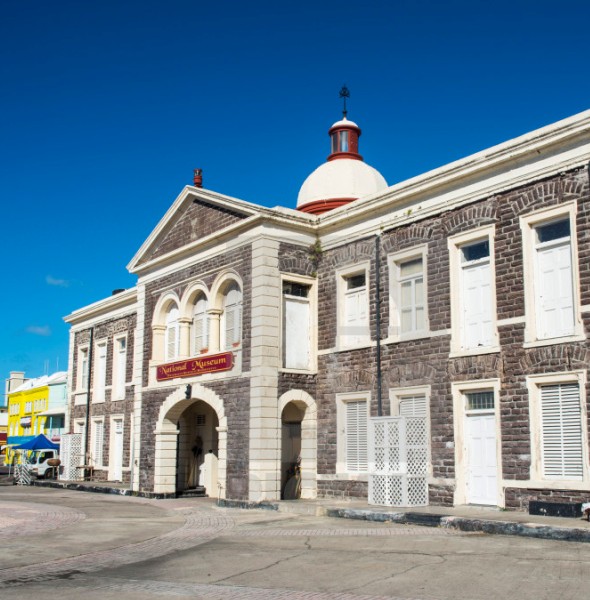EARLY SETTLEMENT
The French first arrived on the island in 1625 and established a colony of their own in 1627 under Pierre Bélain, sieur d’Esnambuc. Divided during the 17th century between warring French and English colonists, Saint Kitts was given to Britain by the Treaty of Utrecht of April 1713 and remained in British possession despite the capture in 1782 of Brimstone Hill by the French. The island was restored to Great Britain by the Peace of Paris treaty signed by Britain and France at Versailles in 1783.
Nevis was also sighted by Columbus in 1493. The island’s name derives from Columbus’s description of the clouds atop Nevis Peak as las nieves, or “the snows,” when he sighted the island.
It was settled by the English in 1628 and soon became one of the most prosperous of the Antilles. Although it suffered from French and Spanish attacks in the 17th and 18th centuries, it maintained a sound economic position until the mid-19th century.

THE OLD TREASURY
The Treasury Building or the “Old Treasury Building” as it is affectionately called by the people of St. Kitts is one of the most outstanding architectural structures in downtown Basseterre.
Erected in 1894, this impressive structure has been witness to the procession of life in the Nation’s capital for over a hundred years. During the years when travelling by sea was the only option the treasury building adopted the name
“The Gateway to the Island”, as its imposing archway led the way to the streets of Basseterre for many visitors and travelling residents.
There was a need for a new treasury in the early 1890’s as the active one was no longer adequate for the amount of government commerce being transacted. In an unusual act of charity, the plantation owners donated funds for a new treasury building to the government and people of St. Kitts.
